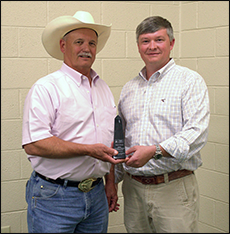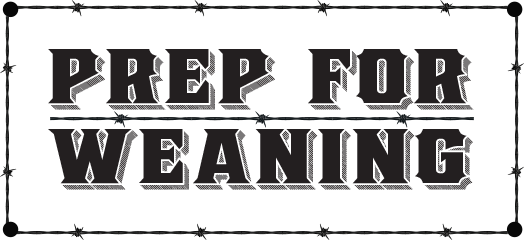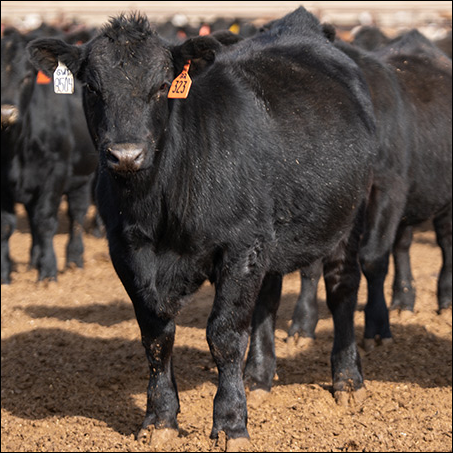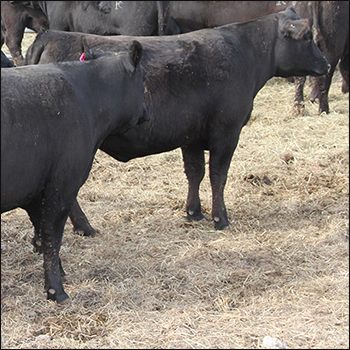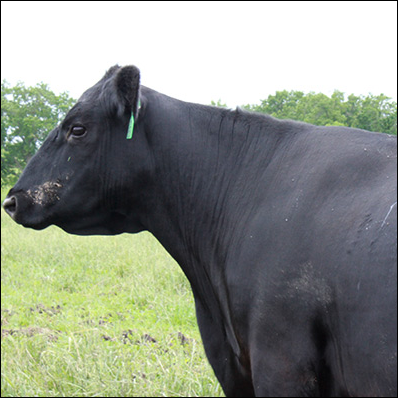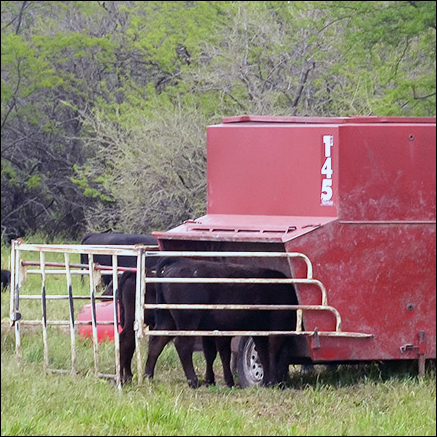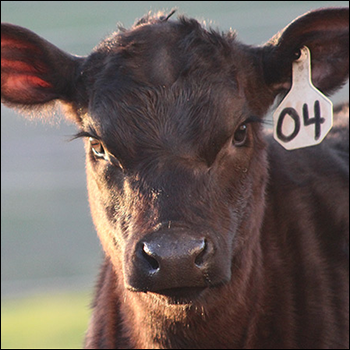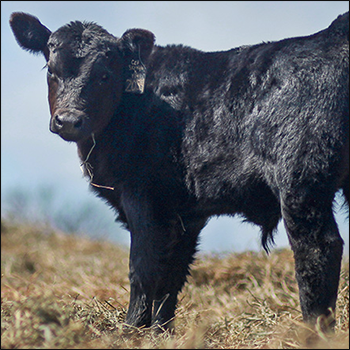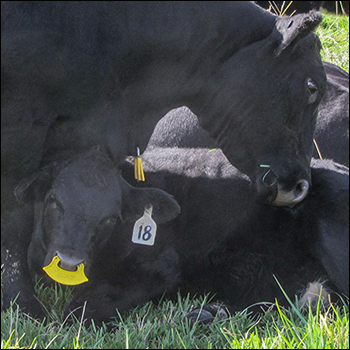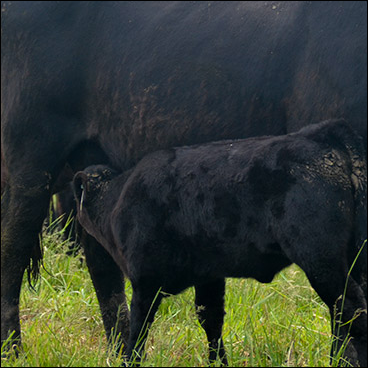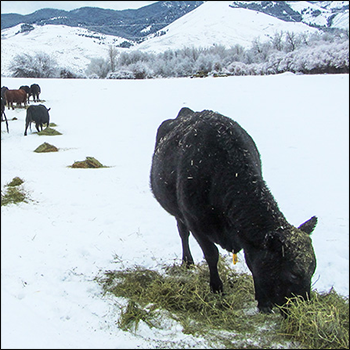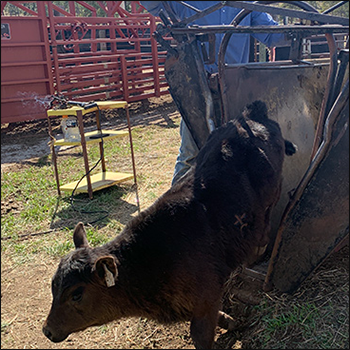News & Notes
Industry tidbits from around the country
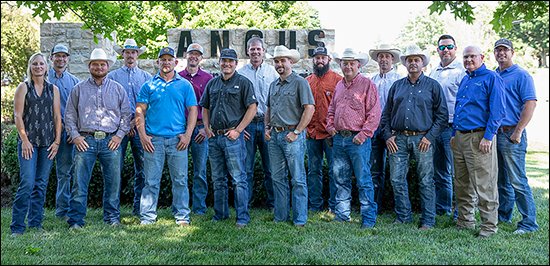 Attending the 2021 Beef Leaders Institute hosted by the American Angus Association are (back row, from left) Dustin Frey, Michael Jensen, Chad Horsley, Gabriel Connealy, Joshua Neal, Kim Skinner, Joe Hortsman, James Gray, (front row, from left) Shelby Oldenkamp, Dylan Massa, Travis Howard, Alex Bauer, Jordan Hunter, Danny Beckman, Josh Gilbert and Bradley Wolter. |
Young producers attend BLI
Sixteen young American Angus Association members from across the country gathered June 14-17 for the 2021 Beef Leaders Institute (BLI) hosted by the Association and funded by the Angus Foundation and the Certified Angus Beef® (CAB®) brand. The program’s goal was to provide a complete pasture-to-plate experience — from selection of genetics to breeding, registration, packing and retail.
“We believe there is no better learning opportunity than through hands-on learning,” said Caitlyn Brandt, events and industry partnership manager for the Association. “BLI is a great opportunity for young cattlemen and women to network and really get to learn about how the moving parts of the industry intertwine.”
The program began at Association headquarters in Saint Joseph, where the group met with staff to learn about various departments and programs. From visiting with Angus Genetics Inc. (AGI) President Kelli Retallick-Riley about genetic evaluation to discussing how to add value to commercial calves with Ginette Gottswiller, Association director of verification services, attendees gained insight into each sector of the beef industry.
Participants heard from professionals on the retail side of the industry and dove into how the CAB brand adds extra value. While at the brand headquarters in Wooster, Ohio, the on-staff meat scientist communicated how to fabricate wholesale cuts, and the in-house chef prepared an eating experience fit for a king.
For more information on BLI and how to be a part of the Class of 2022, visit https://www.angus.org/Event/BLIEntryForm. Look for the 2022 application to be available in early November.
Genomic milestone
In July, the American Angus Association surpassed 1 million genotypes in the weekly genetic evaluation.
“This is the largest sole beef breed database in the U.S.,” notes AGI President Kelli Retallick-Riley, adding that it is actually the largest beef genomic database in the world. “This is a testament to the breeders, as well as past and present staff members of this organization.”
Registration milestones
Since its first registration in 1883, the American Angus Association has registered more than 20 million Angus cattle. The Association has offered a handful of milestone registration numbers for special purchase to assign to individuals to set them apart.
“We typically do 300,000 registrations in a year, so it takes about three and a half years to amass enough registrations to reach another milestone registration,” said Jerry Cassady, director of member services. “These milestone registrations are a testament to the efforts and dedication of our membership to the Angus breed.”
Most recently, both the 20 millionth registration number and the 19 millionth registration number have been assigned. Both registration numbers were sold, with the funds raised supporting the Angus Foundation’s mission of education, youth and research.
The 20 millionth registration number was purchased by Tom Burke of the American Angus Hall of Fame at the 2020 Angus Annual Meeting for $10,000. The registration number was assigned to SAV Scale House 0845, the high-selling bull in the Schaff Angus Valley Sale in February 2021. He is owned by Schaff Angus Valley, Saint Anthony, N.D.; TK Angus, Wood Lake, N.D.; and Voss Angus, Dexter, Iowa.
The 19 millionth registration was purchased at the 2018 Angus Convention for $7,000 by Whitestone Farm LLC. The registration number was assigned to the bull Whitestone, which was bred and owned by Whitestone Farm.
For more information on Angus cattle, visit www.Angus.org; or to support the future of the breed, visit www.AngusFoundation.org.
July 1 cattle inventory down 1%
USDA’s National Agricultural Statistics Service (NASS) on July 23 released the July 1 Cattle Inventory Report. All cattle and calves in the United States totaled 101 million head, 1% below the 102 million head on inventory July 1, 2020. All cows and heifers that have calved totaled 40.9 million head, 1% below the 41.4 million head on July 1, 2020. Beef cows, at 31.4 million head, were down 2% from a year ago. Milk cows, at 9.50 million head, were up 2% from the previous year.
All heifers 500 pounds (lb.) or heavier July 1, 2021, totaled 16.0 million head, 1% below the 16.2 million head July 1, 2020. Beef replacement heifers, at 4.30 million head, were down 2% from a year ago. Milk replacement heifers, at 4.10 million head, were up 3% from the previous year.
Other heifers, at 7.60 million head, were 3% below a year earlier.
Steers 500 lb. and heavier July 1, 2021, totaled 14.5 million head, down 1% from July 1, 2020. Bulls 500 lb. and heavier July 1, 2021, totaled 2.10 million head, unchanged from the previous year.
Calves less than 500 lb. July 1, 2021, totaled 27.4 million head, down 1% from a year earlier.
Cattle and calves on feed for the slaughter market in the United States for all feedlots totaled 13.4 million head July 1, 2021, down 1% from the previous year. Cattle on feed in feedlots with capacity of 1,000 or more head accounted for 84.3% of the total cattle on feed July 1, 2021, up slightly from the previous year. The total of calves under 500 lb. and other heifers and steers heavier than 500 lb. (outside of feedlots), was at 36.1 million head, down 2% from the 36.7 million head July 1, 2020.
The 2021 calf crop in the United States is expected to be 35.1 million head, down slightly from last year. Calves born during the first half of 2021 are estimated at 25.8 million head, up slightly from the first half of 2020. An additional 9.3 million calves are expected to be born during the second half of 2021.
Integrated campaign shares sustainability efforts
The Beef. It’s What’s for Dinner. brand managed by the National Cattlemen’s Beef Association (NCBA), a contractor to the Beef Checkoff, launched a new beef campaign highlighting real beef farmers and ranchers. Consumers will be invited to learn more about how cattle farmers and ranchers around the country are employing sustainable practices to care for the land and produce high-quality beef.
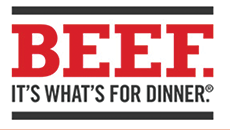 |
Recent scientific research funded by the Beef Checkoff shows decades of continuous improvement efforts on farms and ranches around the country have resulted in the United States being the leader in sustainable beef production. In fact, according to the U.S. Environmental Protection Agency (EPA), greenhouse gas (GHG) from beef cattle represents only 2% of emissions in the United States. Additionally, 90% of what cattle eat is forage and plant leftovers that people can’t eat.
With this strong foundation of scientific and consumer market research, NCBA took the opportunity to develop a fully integrated campaign that will target consumer, influencer, media and supply chain audiences. The campaign will come to life in a variety of ways, including:
- New Beef. It’s What’s For Dinner. advertising that will run on social media, YouTube and connected TV with a new video series highlighting how beef farmers and ranchers around the country are implementing land-conserving, award-winning environmental efforts:
- An interactive map on BeefItsWhatsForDinner.com that will be featured in the new ads and invite consumers to meet beef farmers and ranchers from each state;
- A series of interviews showcasing sustainability from farm to table on local TV and radio stations across the country;
- Influencer partnerships bringing chefs and cattle producers together for a collaborative and educational video series; and
- Content partnerships and sustainability story placements in publications, from the national level to the local level, across the country.
“Beef farmers and ranchers have been caring for the land and environment for generations and will continue to do so,” said Clay Burtrum, 2021 Federation Division chair. “Consumers want to know more about where their food comes from, and as sustainability becomes a focus for consumers, it’s important for us to tell our story as effectively as possible, and this campaign does just that.”
According to market research, only 24% of consumers say they are knowledgeable about how cattle are raised for food. This sustainability campaign aims to address that by introducing consumers to farmers and ranchers across the country and showcasing the many efforts underway to help sustain and improve the land for generations to come. Consumers will also be introduced to the Environmental Stewardship Award Program (ESAP) and the Beef Quality Assurance (BQA) program as further evidence of steps taken by the industry to adhere to the highest standards.
For more information on the U.S. cattle industry and its efforts toward beef sustainability, visit www.BeefItsWhatsForDinner.com or www.beefresearch.org.
Webinar features nutrition for today’s cow
Since the 1970s, carcass weights have increased on average of 6 pounds per year, 80% of cattle are grading Choice or higher, and the beef industry’s environmental footprint has been reduced — all with the goal of meeting consumer demands and increasing the value of beef.
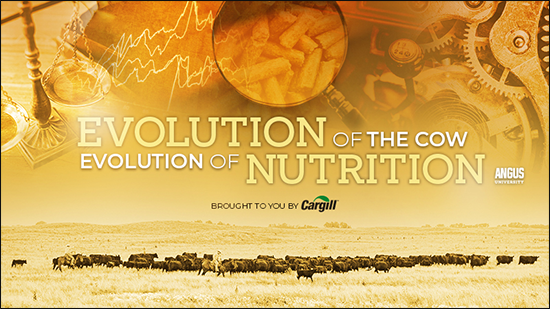 |
The cow has changed drastically since the 1950s to meet those needs, noted Wesley Moore, technical specialist at Cargill Animal Nutrition, raising the question: “Are cows consuming the nutritional requirements needed to reach optimum performance?”
Moore addressed the topic during a Cargill Animal Nutrition-sponsored Angus University Webinar titled “Evolution of the Cow, Evolution of Nutrition.”
The nutrition program at any operation should reflect the producer’s specific selection pressures. When developing a nutrition program, Moore said, producers need to grasp three factors:
- know your cow,
- know your environment, and
- know your situation.
He added, as cow requirements change based on performance, their nutritional needs change.
“With a bigger and more productive cow comes more cost, and if we are not gaining more revenue, we really need to change our business model,” he said. “Nutrition should not be a cost; rather, it should be an investment.”
It is important producers select females and make mating decisions that both fit and perform specific to their environment while still using the resources they have available to reach optimum performance.
To watch the webinar, visit https://www.youtube.com/watch?v=IUkPeNfN-wU&t=2s.